Kubernetes and Cloud Native Security Associate (KCSA)
Kubernetes Cluster Component Security
Securing Container Runtime
Ensuring a secure container runtime on each compute node is vital for any production-grade Kubernetes cluster. While Docker was the historical default, Kubernetes now natively supports containerd and CRI-O—runtimes designed for tighter integration and stronger security.
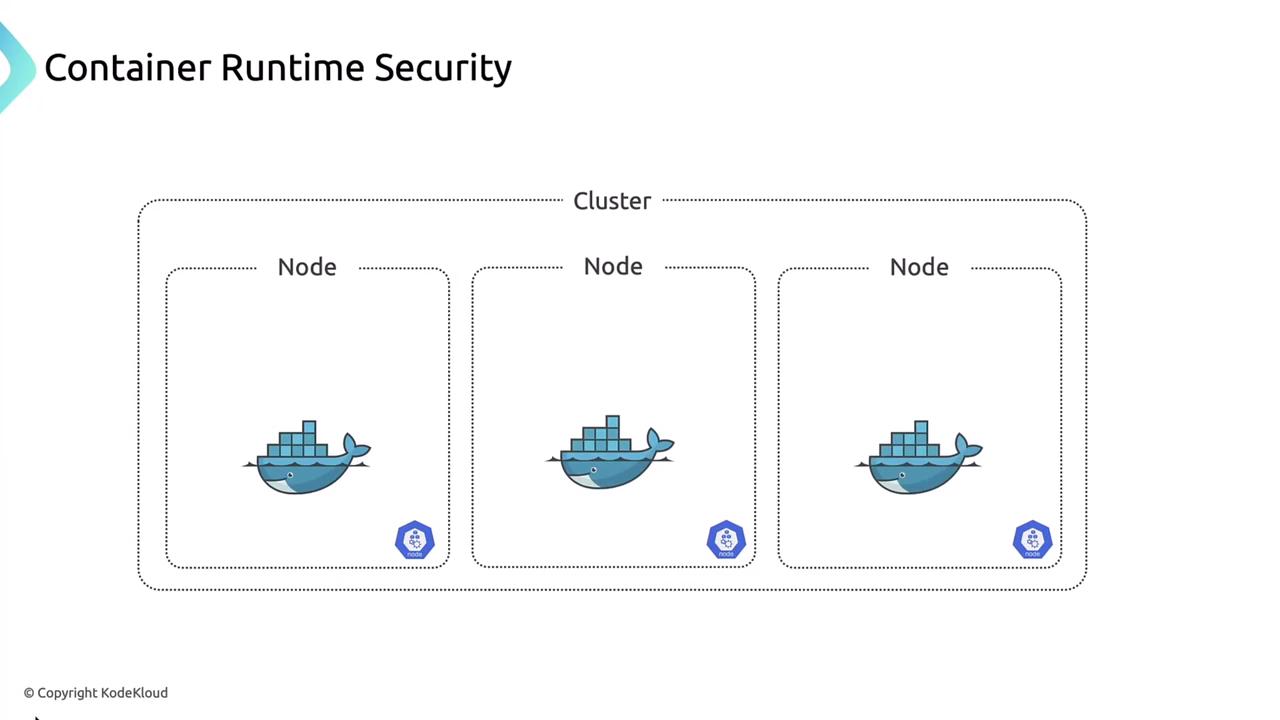
Why Migrate from Docker?
Docker’s early releases suffered from a critical vulnerability that allowed containers to execute with root privileges on the host. Modern container runtimes mitigate this risk by adhering to the Container Runtime Interface (CRI).
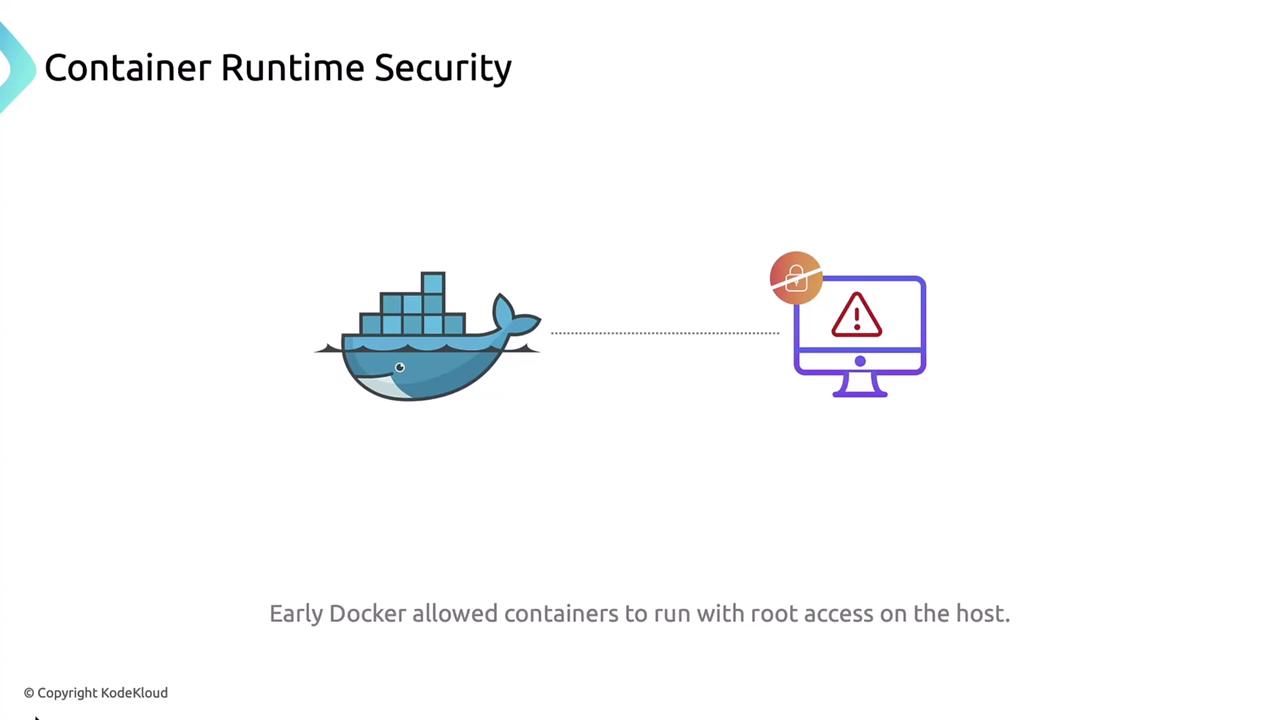
Common Container Runtime Vulnerabilities
Several high-profile CVEs have underscored the need for a secure runtime:
| Vulnerability | Impact |
|---|---|
| Dirty COW | Linux kernel flaw allowing unauthorized root access |
| runc container breakout | Overwriting the runc binary to gain host-level privileges |
| Docker container escape | Accessing sensitive host files from within a container |
| containerd denial of service | Forcing a host DoS via containerd resource exhaustion |
| CRI-O container escapes | Breaking out of CRI-O sandbox to the host |
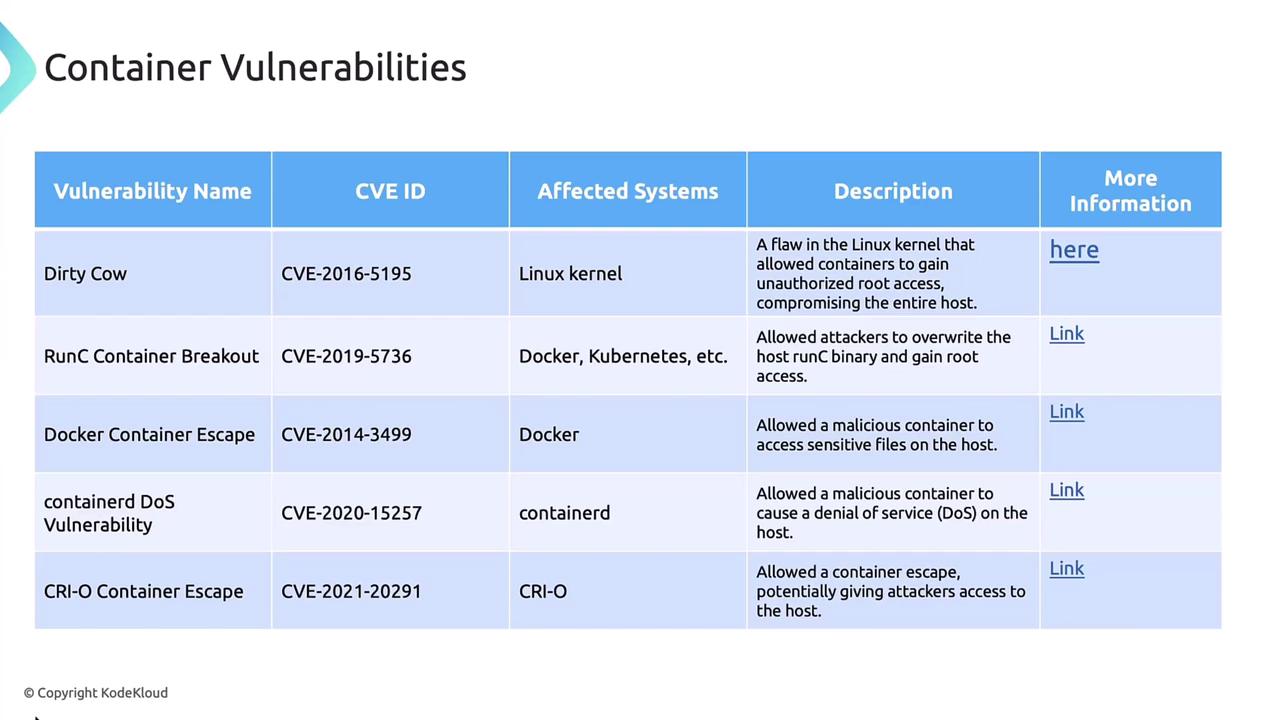
For a complete list of CVEs and mitigation steps, refer to your runtime’s security advisories.
1. Regular Updates and Patching
Keeping containerd, CRI-O or Docker packages up to date is a straightforward way to close known security gaps.
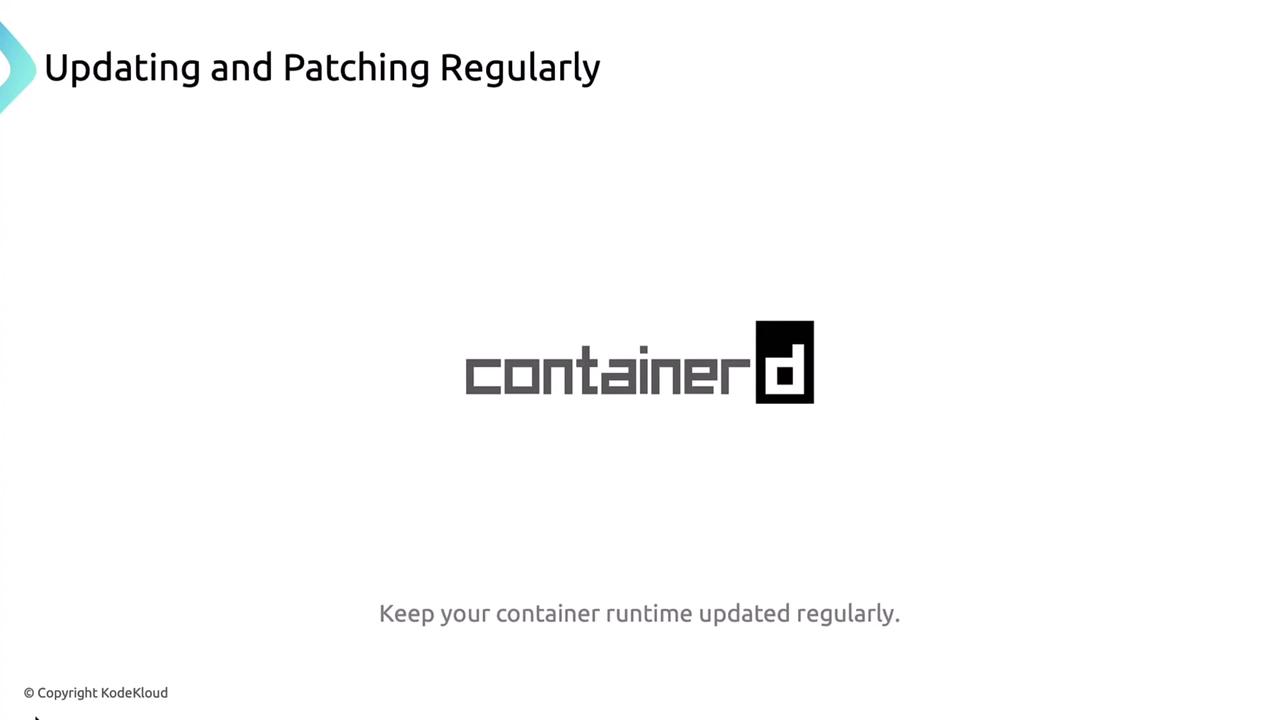
sudo apt-get update
sudo apt-get install containerd
Note
Always consult the official Kubernetes container runtimes guide for platform-specific instructions.
2. Least-Privilege Execution
Avoid running containers as root. Assign non-root UIDs/GIDs to limit blast radius:
apiVersion: v1
kind: Pod
metadata:
name: least-privilege-pod
spec:
securityContext:
runAsUser: 1000
runAsGroup: 3000
containers:
- name: app
image: my-app-image
Warning
Failing to specify runAsUser can expose your host to privilege escalation if a container is compromised.
3. Enforce a Read-Only Filesystem
Prevent on-disk tampering by mounting the root filesystem as read-only:
apiVersion: v1
kind: Pod
metadata:
name: readonly-pod
spec:
containers:
- name: app
image: my-app-image
securityContext:
readOnlyRootFilesystem: true
4. Resource Limits
Define CPU and memory limits to protect the node from denial-of-service attacks:
apiVersion: v1
kind: Pod
metadata:
name: resource-limits-pod
spec:
containers:
- name: app
image: my-app-image
resources:
limits:
memory: "512Mi"
cpu: "1"
5. Mandatory Access Control (SELinux & AppArmor)
SELinux
apiVersion: v1
kind: Pod
metadata:
name: selinux-demo
spec:
containers:
- name: nginx
image: nginx
securityContext:
seLinuxOptions:
user: "system_u"
role: "system_r"
type: "spc_t"
level: "s0:c123,c456"
AppArmor
apiVersion: v1
kind: Pod
metadata:
name: apparmor-demo
annotations:
container.apparmor.security.beta.Kubernetes.io/app: localhost/my-apparmor-profile
spec:
containers:
- name: app
image: my-app-image
6. Transition to containerd or CRI-O
Docker support is deprecated in newer Kubernetes releases. Migrate to containerd or CRI-O for enhanced security, performance, and forward compatibility.
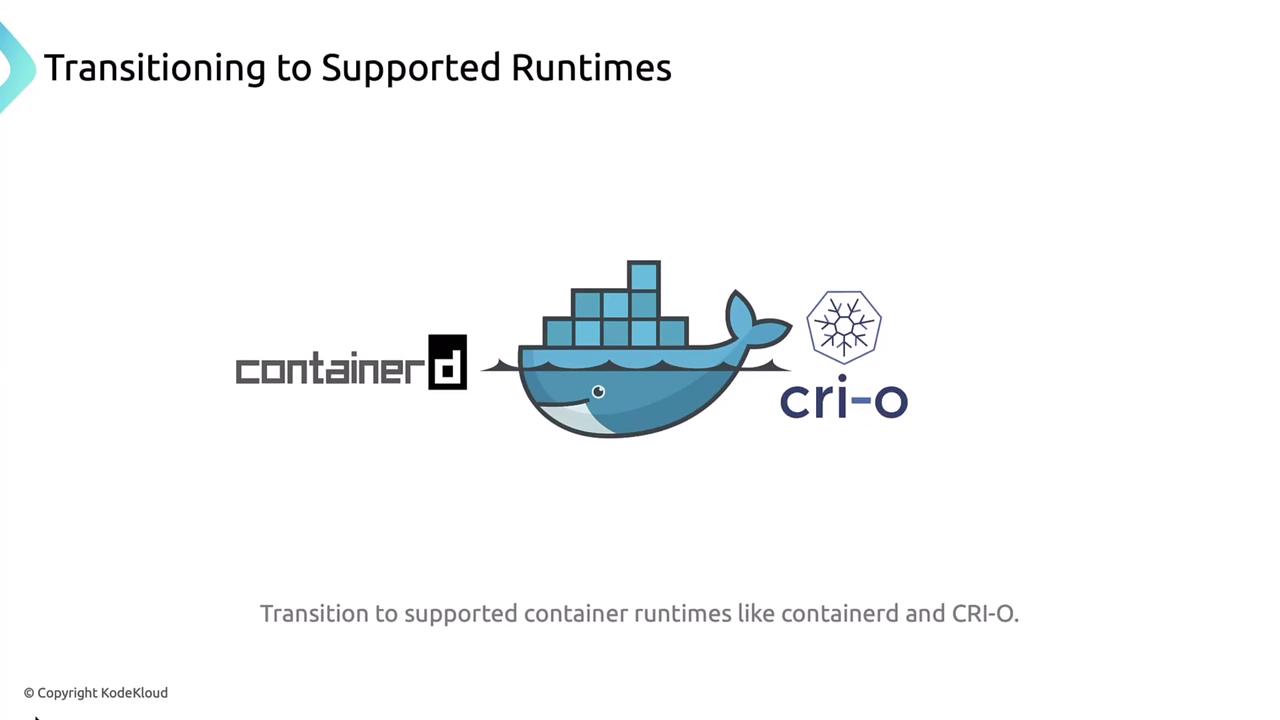
Update your node bootstrapping scripts or configuration management to use the CRI socket (/run/containerd/containerd.sock or /var/run/crio/crio.sock).
7. Monitoring, Logging & Auditing
Centralize logs and metrics to detect runtime anomalies:
- Fluentd, Logstash, Elasticsearch for log aggregation
- Prometheus & Grafana for metrics
- Kubernetes Audit Logs for API event tracking
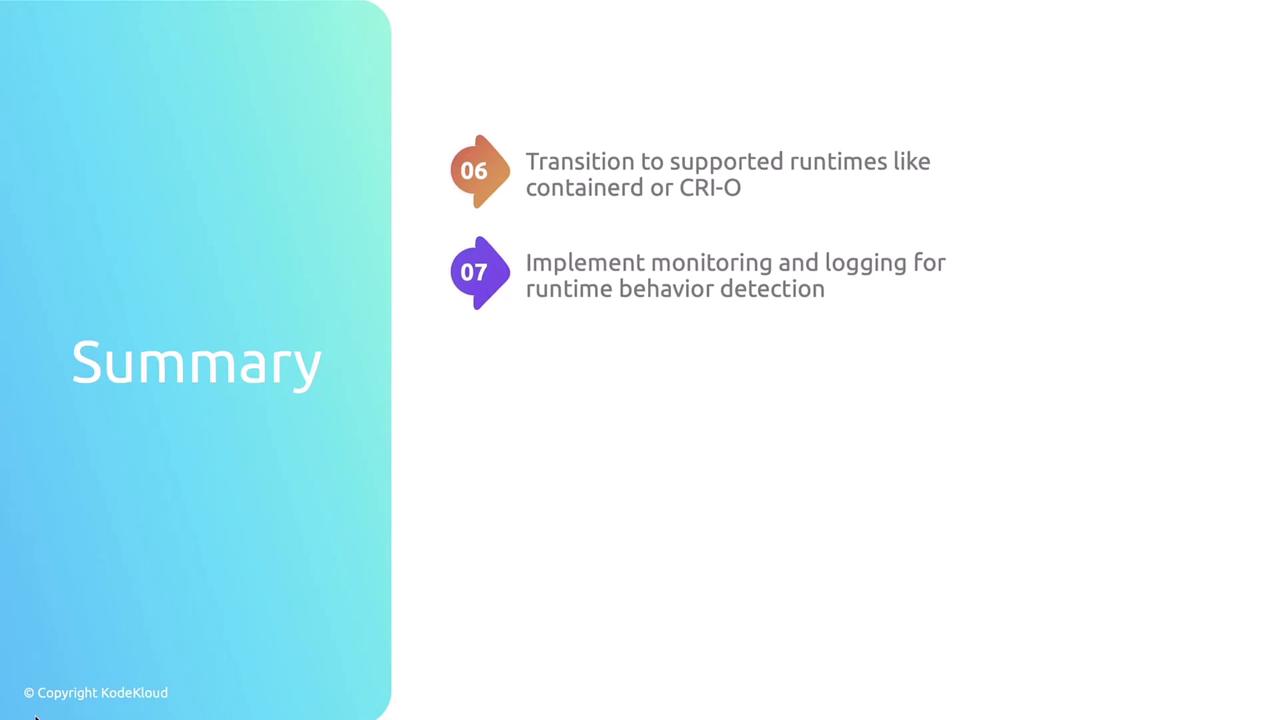
References
Watch Video
Watch video content